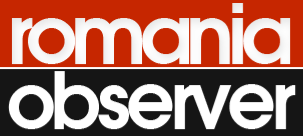Romania's annual inflation rate increased to 7.84 pct in July 2025, from 5.7 pct in June, as food goods became more expensive by 7.67pct, services by 7.33pct and non-food goods by 8.18pct, according to the National Institute of Statistics (INS) data published on Tuesday."The Consumer Price Index in July 2025 compared to June 2025 is 102.68pct. The inflation rate since the beginning of the year (July 2025 compared to December 2024) is 5.8pct. The annual inflation rate in July 2025 compared to July 2024 is 7.8pct. The average rate of change in consumer prices over the last 12 months (August 2024 - July 2025) as compared to the previous 12 months (August 2023 - July 2024) is 5.3pct,' according to the INS data.According to official statistics, the Harmonised Index of Consumer Prices (HICP) in July 2025 compared to June 2025 was 101.35pct. The HICP-based annual inflation rate in July 2025 compared to July 2024 was 6.6pct. The HICP-based average rate in consumer price over the last 12 months (August 2024 - July 2025) compared to the previous 12 months (August 2023 - July 2024) was 5.4pct.The annual inflation rate will register a significant jump in the third quarter of 2025, due to the temporary impact of the expiration of the electricity price cap scheme and the increase in VAT rates and excise duties starting August 1, and over the following three quarters it will decrease relatively slowly and follow a fluctuating path, considerably higher than in the previous projection, a National Bank of Romania (BNR) release sent on Friday informed.The Board of Directors of the BNR analyzed and and approved, during Friday's monetary policy meeting, the August 2025 edition of the Inflation Report, a document that incorporates the most recent available data and information."According to the forecast included in the Report, the annual inflation rate will surge markedly in 2025 Q3, under the transitory impact of the expiry of the electricity price capping scheme and the increase in VAT rates and excise duties starting 1 August, while in the following three quarters it will come down relatively slowly, on a fluctuating path considerably higher than that in the previous projection. However, the indicator will witness a steep downward correction in 2026 Q3, once the direct inflationary impact of the two supply-side shocks has faded out, and thereafter it will decrease gradually, re-entering and falling deeper into the variation band of the target towards the end of the projection horizon, amid stronger disinflationary pressures from the aggregate demand deficit that is anticipated to widen much faster than in the previous projection, given the fiscal adjustment packages implemented as from August 2025," the BNR release mentioned."Uncertainties are, nevertheless, further associated with the measures likely to be adopted in the future in order to continue budget consolidation in line with the National Medium-Term Fiscal-Structural Plan agreed with the European Commission and with the excessive deficit procedure," according to the BNR release.

